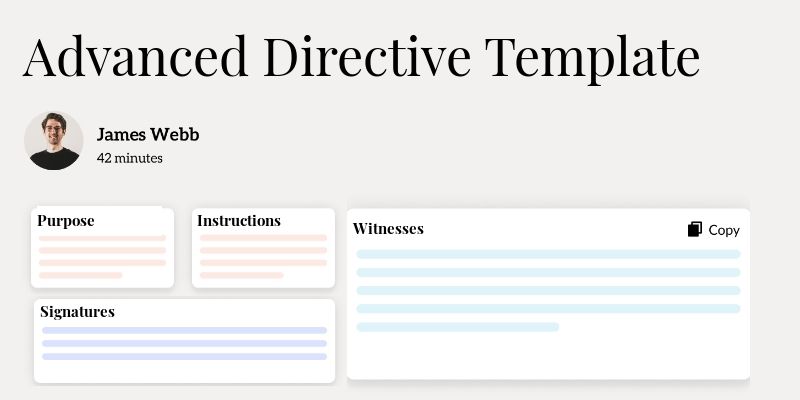
Patient Feedback Note Template
Is capturing meaningful feedback from your patients becoming more of a challenge for you or your practice? You’re not alone! Many healthcare professionals find themselves seeking efficient ways to enhance patient interaction and satisfaction. That’s where a robust Patient Feedback Note Template comes into play. In this article, we'll dive into all you need to know about maximizing the potential of this essential tool!
What Is a Patient Feedback Note Template?
A Patient Feedback Note Template is a structured tool used by healthcare providers to systematically capture and document feedback from patients. It serves as a record‑keeping aid, assisting practitioners in delivering better patient‑centered care.
This structured template guides patients in expressing their experiences, thoughts, and suggestions regarding the medical care they received. It is instrumental in drawing valuable insights into patient satisfaction and areas requiring improvement.
Key Components of a Patient Feedback Note
The Patient Feedback Note Template typically consists of certain key components that contribute to its effectiveness:
- Patient Identification: Basic information to identify the patient while maintaining privacy.
- Date of Visit: Keeps track of when the service was provided.
- Service Feedback: Detailed sections covering various aspects of the patient's experience.
- Suggestions for Improvement: Encourages constructive feedback to enhance practices.
- Rating Scale: Standardized ratings for summarizing satisfaction levels.

How to Use a Patient Feedback Note Template: Step-by-Step Process
- Ensure the template is readily available during patient discharge or follow-up.
- Inform the patient about the purpose and importance of their feedback.
- Guide the patient through each section of the template, clarifying any queries.
- Collect the completed template and store it securely with patient records.
- Review the feedback periodically to identify common themes and actionable insights.
Benefits of a Patient Feedback Note
Benefit | Explanation | Impact |
|---|---|---|
Improved Patient Care | Enables practitioners to pinpoint areas for enhancement. | Higher patient satisfaction and retention. |
Data Consistency | Standardizes feedback collection across the practice. | Easier to compare and analyze patient feedback. |
Practice Development | Provides insights into patient perceptions and needs. | Guides strategic improvements in services offered. |
Communication Enhancement | Fosters a culture of communication between patients and providers. | Builds trust and openness in patient-provider relationships. |
Stakeholders in Patient Feedback Notes
Several key stakeholders benefit from implementing a Patient Feedback Note Template in a healthcare setting:
- Healthcare Providers: For example, Dr. Smith utilizes the feedback to enhance treatment protocols.
- Patients: Patients like Amanda find they have a voice and see real changes based on their suggestions.
- Administrative Staff: Staff, like Ms. Jones, use the data to streamline operations and reduce patient wait times.
- Quality Assurance Teams: QA teams analyze the feedback to improve service delivery standards.
Example of a Patient Feedback Note
An effective Patient Feedback Note might include fields for patient demographics, a series of specific questions regarding different parts of the service experience, and open‑ended sections for personal comments.
Real-World Use Cases: Practical Impact of the Patient Feedback Note Template
The practical application of a Patient Feedback Note Template is broad, encompassing various real‑world scenarios:
- Streamlining Patient Flows: In a busy clinic, feedback notes revealed long wait times, prompting changes that streamlined patient flow and improved satisfaction.
- Patient Retention: After implementing feedback-driven practice enhancements, a healthcare network reported a 15% increase in patient retention.
- Issue Identification: A hospital used detailed feedback to identify issues with appointment scheduling, leading to an updated, more efficient system.
Conclusion
The Patient Feedback Note Template serves as a vital resource for healthcare professionals aiming to enhance patient care and satisfaction. Leveraging this tool not only provides insights into patient experiences but also fosters continuous improvement in healthcare practices. By implementing the strategies and insights shared in this article, practices can ensure they remain responsive and patient‑focused in their care delivery approach.
Disclaimer: This article is for informational purposes only and does not constitute legal or medical advice. Always consult professional guidelines and regulatory bodies for specific compliance requirements.

Dr. Danni Steimberg
Dr. Danni Steimberg is a pediatrician at Schneider Children’s Medical Center with extensive experience in patient care, medical education, and healthcare innovation. He earned his MD from Semmelweis University and has worked at Kaplan Medical Center and Sheba Medical Center.
Capturing patient perspectives isn’t just about satisfaction metrics—it’s a direct line to improving care and compliance. Honed through real‑world patient interactions, this method ensures every comment shapes better outcomes.
- Ask Targeted Questions: Focus on specific issues (e.g., medication side effects, scheduling challenges) so feedback is actionable.
- Validate Responses: Summarize and reflect the patient’s words in your note—showing genuine understanding fosters trust and buy-in.
- Close the Loop: Include next steps (e.g., adjusting a care plan or following up on a concern) to demonstrate immediate responsiveness and continued accountability.
Frequently Asked Questions
Reduce burnout,
improve patient care.
Join thousands of clinicians already using AI to become more efficient.

HIPAA Consent Form Template
Discover practical HIPAA Consent Form templates to enhance your documentation efficiency.

Relapse Prevention Plan Template
Discover practical Relapse Prevention Plan templates to enhance your documentation efficiency.

Advanced Directive Template
Discover practical Advanced Directive Template templates to enhance your documentation efficiency.

